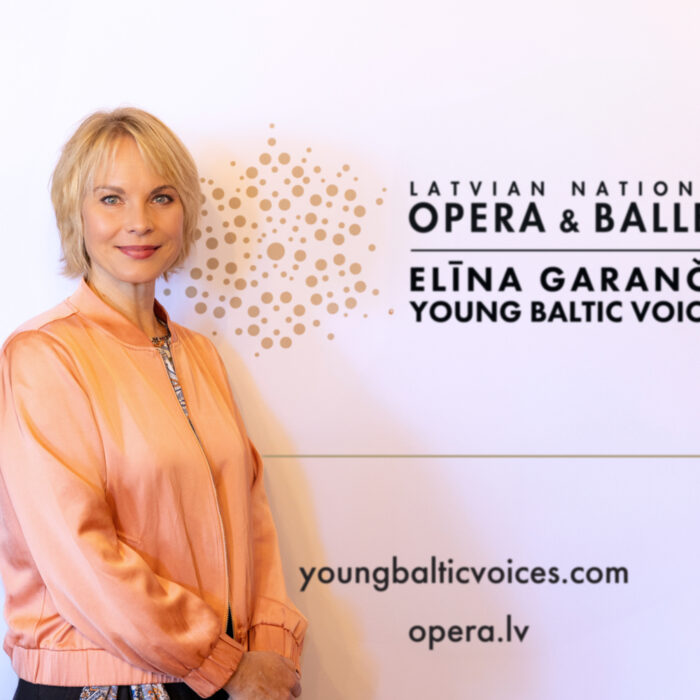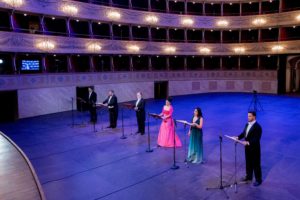
From Historical Documents to Strange Production Choices: An Analysis of the 2020 Donizetti Opera Festival
By Francisco SalazarThe Donizetti Festival has become one of the most anticipated festivals of the year.
It is a chance for audiences to discover unknown works from the bel canto master and experience the city where the great composer was born. There are operas, concerts, and family events. The city itself welcomes tourists from around the world and puts signs all over promoting the festival. It is truly a complete experience.
However, this year with the COVID-19 pandemic hitting the entire world and altering our social interactions in almost all possible ways, theaters were forced to close. However, the Donizetti Festival found a way to still perform three of its four originally scheduled operas, albeit without an audience.
The feat was remarkable with the festival creating a streaming service and bringing some of the greatest bel canto singers to the fore. While it was not always perfect, one has to applaud the festival for its efforts.
Here is a look at the overall experience of the festival.
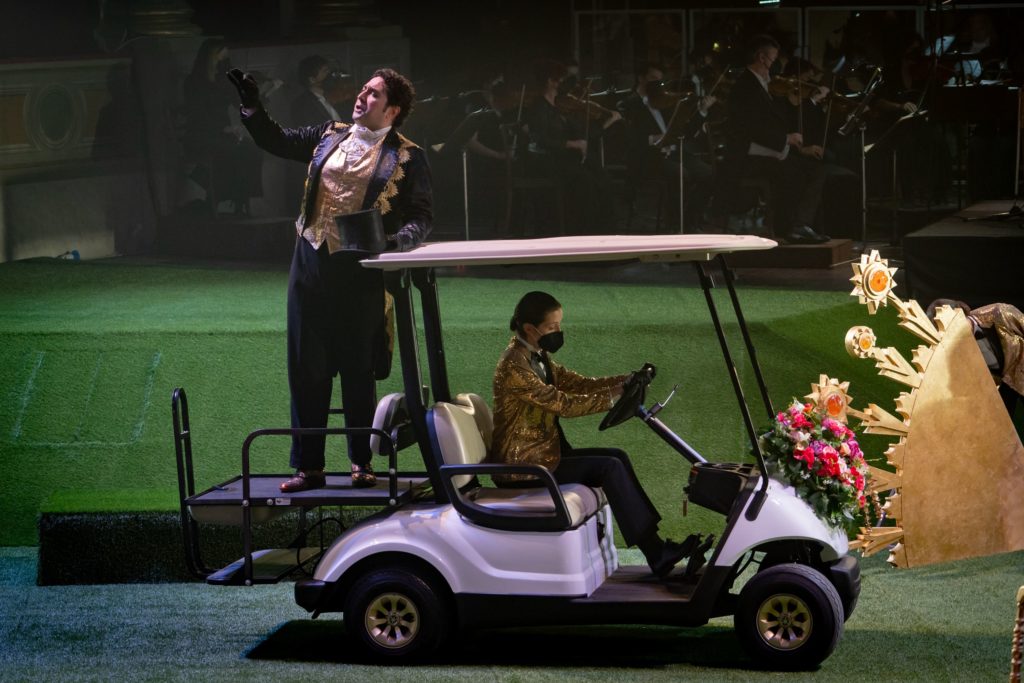
Pros
Historical documents
I have always been an advocate for streaming and recording operas because it is a historical document of the production and something that we can look back on for reference or just to simply listen to. For many, these productions presented this year at the Donizetti Festival were rarities and while two of the three, “Belisario” and “Marino Faliero” have some recordings, it was likely the first time many were hearing them.
With the new Donizetti Web TV, one hopes that the works will be widely available to stream for the future and for this catalog to continue to expand. I also believe that this new experiment should be implemented every year and that if possible all three productions presented yearly should be streamed for audiences not in Italy. After all, the Donizetti Festival is not only a musical feast but in many ways a scientific rediscovery of a composer whose works have been ignored or simply forgotten. And what better way to discover the composer’s works than with critical editions in curated productions.
Behind the Scenes
While the festival presented three operas, there were also some incredible behind the scenes conversations and a virtual tour of the Donizetti Opera theater. There were also interviews with the singers that gave audiences a chance to hear from the performers and learn more about their sentiments regarding Donizetti. These behind the scenes features had English subtitles and there was even an English language tour alongside an Italian one. It was evident that the festival did everything for audiences to feel like they were going to Bergamo.

Incisive Musicality
Like last year, the one thing that I admired about the Donizetti Festival was the musical aspects from its orchestra, chorus, and casts. It is clear that while not all of the starry casts planned were able to happen and some of the cast members arrived with little time to prepare their roles, the soloists once again performed with a great sense of style and musicality that is unlikely seen at a production house. Riccardo Frizza’s sensitive readings of “Belisario” and “Marino Faliero” created urgency in the music and he also allowed his soloists to breathe and cherish the legato lines. His use of percussion is also nuanced as opposed to the bombastic readings of other conductors.
Among the musical highlights included Carmela Remigio’s imposing Antonina. The soprano managed to capture the stage the moment she arrived with her commitment to the character. She impressed in each aria and ensemble with her dynamic choices, the flexibility in her voice, and the attention to the text. The control in her voice was spectacular, never missing a crescendo or decrescendo and singing with pure coloratura lines. The final cabaletta “Egli e Spento” was sung with dramatic attention and there was always a drive in how she phrased the text.
Annalisa Stroppa’s Irene was also something to applaud, as she showcased a brilliant mezzo-soprano, and displayed gorgeous coloratura lines to go along with a smooth legato line. In “Marino Faliero,” Francesca Dotto displayed a round soprano that fits beautifully into the dramatic qualities of Donizetti’s operas. She relished the diverse color palette of her voice and expressed an incredible middle register. Her dramatic qualities as an actress were also on full display. Bogdan Baciu’s Israele was another standout who showcased his booming baritone. It is important to note the performances of Fabio Capitanucci and Omar Montanari in “Le Nozze in Villa” fit perfectly into Donizetti’s early writing and worked their instruments into the buffo composition.
The two tenors of this year’s festival, Celso Albelo and Michele Angelini also brought different qualities to the music of Donizetti. Albelo brought a weighty and dramatic tenor in “Belisario” while Angelini sang with delicacy and bright tone in “Marino Faliero.”
The festival also counted with some important veteran artists incluidng Roberto Frontali and Michele Pertusi singing the title roles of “Belisario” and “Marino Faliero,” respectively. Frontali brought dramatic insight to the role of Belisario as well as a delicacy that showcased an expertise in the bel canto style. Meanwhile, Pertusi sang with command and vigor in the title role of “Marino Faliero.”
The cast of “Le Nozze in Villa” was also of note as there was unity in the ensemble, all performing alongside a period orchestra.
And one of the most incredible things about a festival setting is the chance to hear rising stars. Giorgio Misseri brought a promising tenor to the role of the Gondolier in “Marino Faliero” and the role of Claudio in “Le Nozze in Villa.” Gaia Petrone and Anaïs Mejías were two discoveries from watching the streams and two singers that have bright futures.
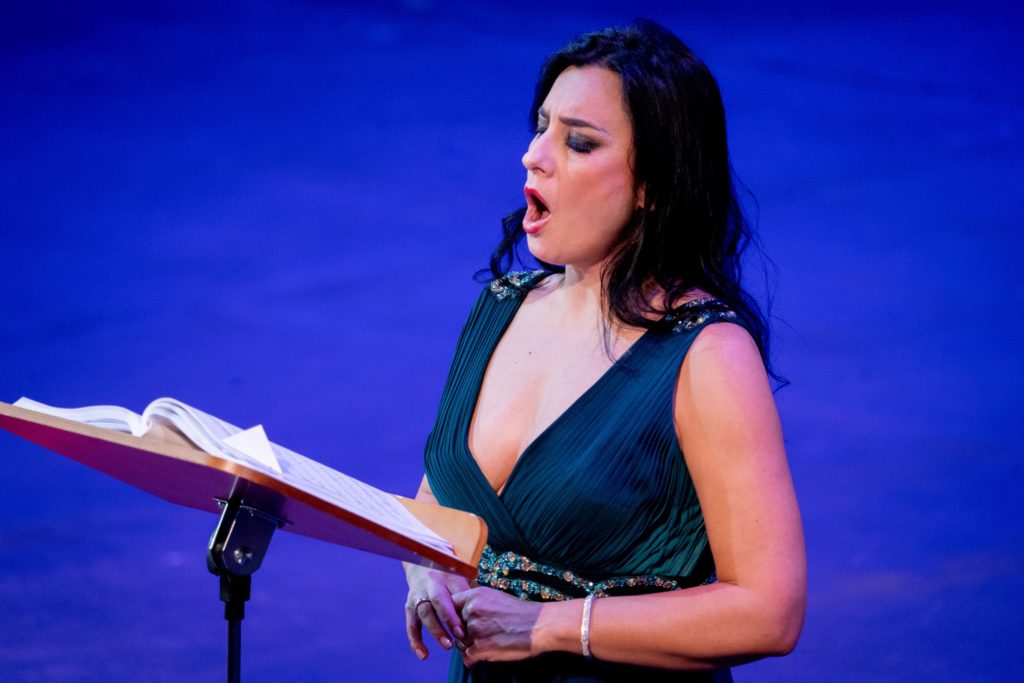
Cons
Productions
One of the great qualities of a festival is to discover new works. However, that can be hindered if a production distracts rather than enlightens an audience. While the production of “Le Nozze in Villa” was passable given the circumstance of the current pandemic, “Marino Faliero” was incomprehensible. The constant moving from one staircase to the other and the use of extras dancing and moving in choreographed forms made it incredibly impossible to understand anything that this very important work was about. What also made it hard to keep focus, was the lighting, which was always dark and at points hard to see the singers on stage. Another distracting aspect of the “Marino Faliero” production was the colorful costumes that made the work look more like a comedy than a dramatic work. Having watched “Belisario” a day after, I must say I much preferred to watch a concert performance because I actually understood what was going on in the drama. Sometimes in unknown works, it is better to keep it simple so the musical aspects don’t get lost and the work can actually be analyzed in more depth.
Subtitles
With the opportunity of creating a streaming platform, the Donizetti Opera Festival has also created an opportunity to expand its audience to many reaches. However, as I watched this year’s operas, one of the biggest things that came up was there were no English or other language subtitles. For non-Italian audiences, this is a big turnoff and it leaves audiences who are eager to discover new works at a big disadvantage.
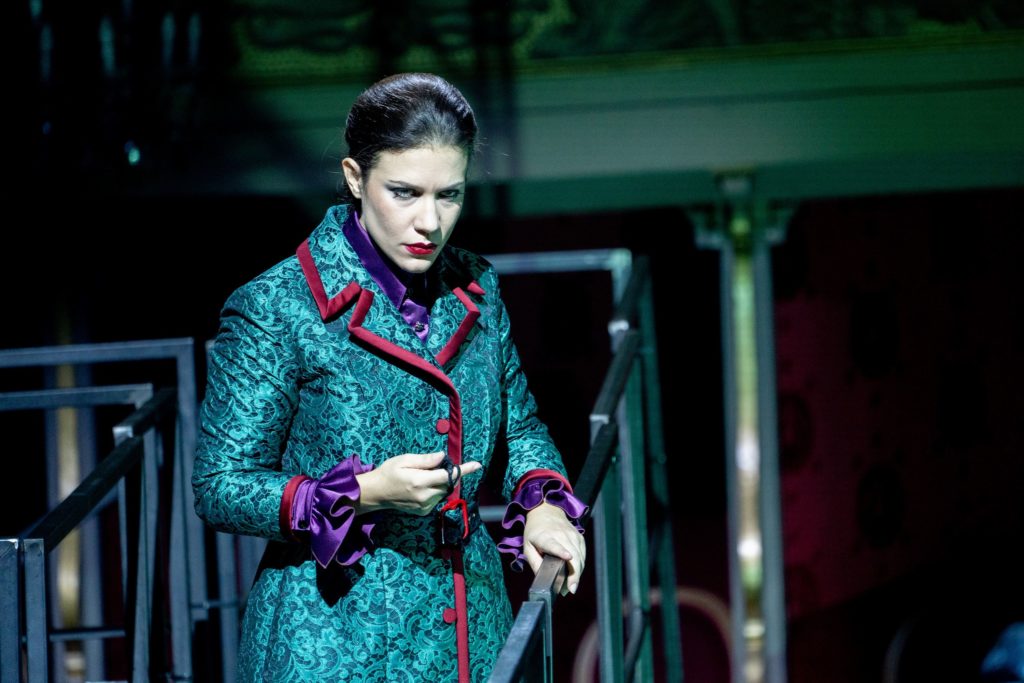
Urgency
One must applaud the Donizetti Festival for having performed these three productions and for having put together this incredible experience. Nobody can fault the festival for streaming fatigue or for the fact that an opera should be performed live with an audience in a theater. The conditions of this pandemic have limited performers but have also allowed streaming to become an essential part of the industry. As much as I advocate for recording performances and leaving a historical document for the future, I also find this format problematic.
However and this may not be a con of the festival but just an overall feeling of streaming at this point. The level of immediacy or urgency in watching a performance is lost. Because there is such a vast array of performances and streams available, there is a tendency to pause or put your attention toward something else. Opera in this setting is competing with other media (Netflix, Amazon Prime, Hulu, YouTube, etc.) and even more immediate tasks within the household. The opera is perhaps not seen completely in one sitting and instead cut into different days. In a theater, those other technological distractions are gone and the audience is concentrated on the stage and the work at hand. For this same reason, which is, of course, a personal one, I hope the festival finds a way of reprogramming these three works in future festival seasons so audiences can truly experience them the way Donizetti intended them.
Categories
News
